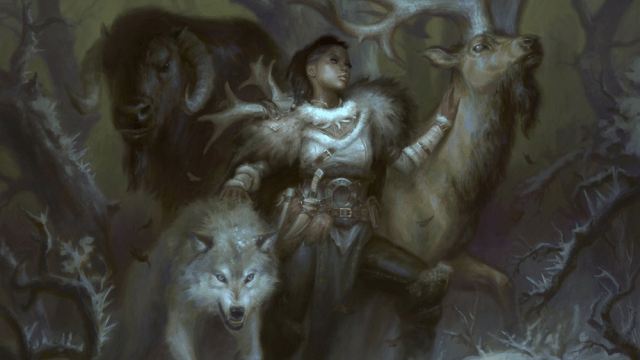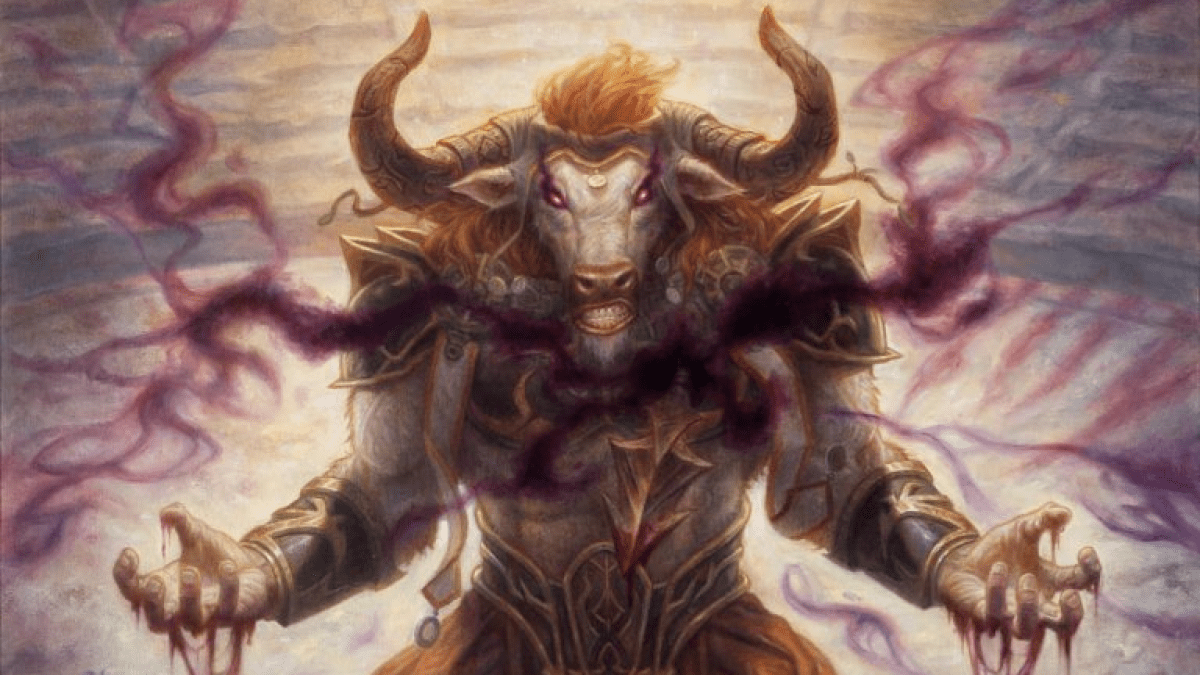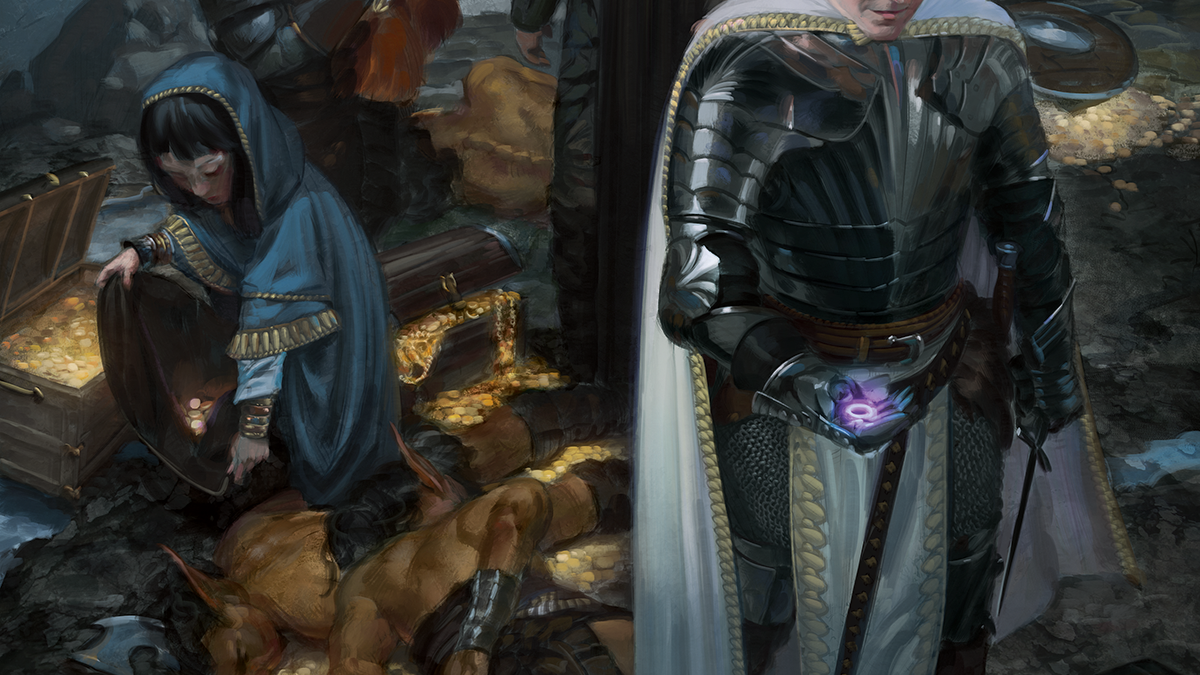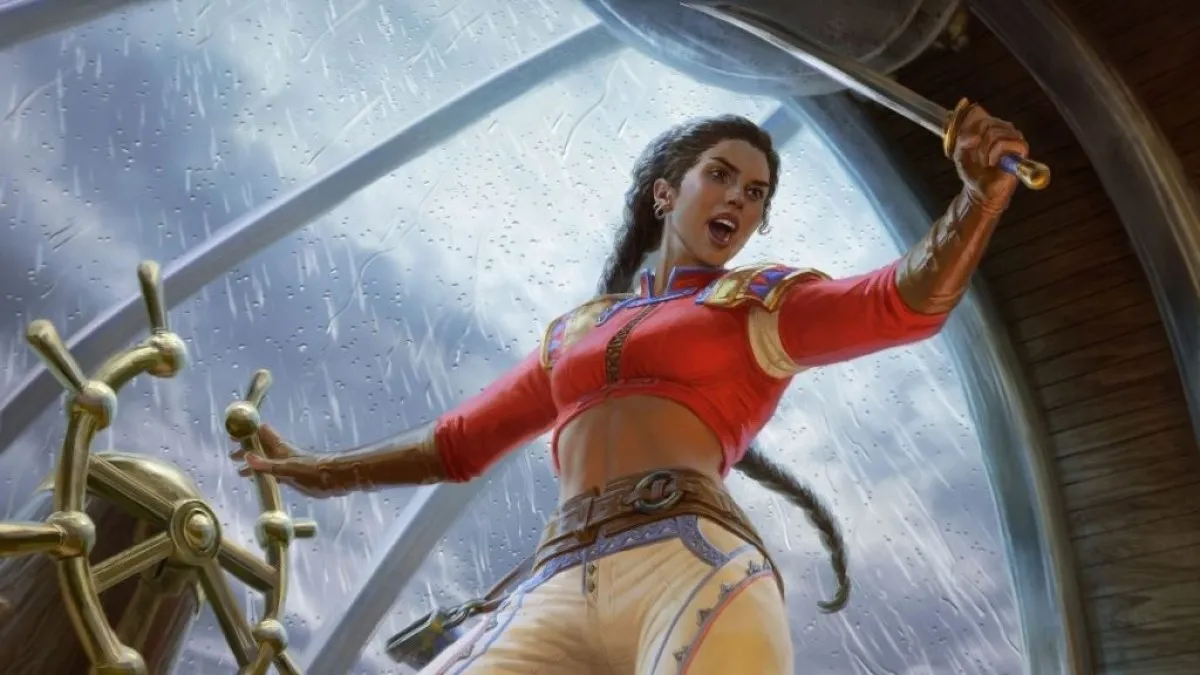The raging demons of the battlefield, Barbarians might be one of the most flawed classes in DnD 5E. Multiclassing them is a quick way to augment their overreliance on melee combat, limited healing, and low but consistent damage, at the cost of their bad late-game abilities.
Barbarians are melee-centric frontliners with the ability to enter a frothing rage a limited number of times per day. While in their rage, they gain access to fantastic abilities that pivot physical altercations around them. Outside of their rage, they deal consistent damage with Reckless Attack and remain surprisingly durable.
The best classes to multiclass with Barbarian in 5E
Barbarians have big blind spots in ranged combat, out-of-combat utility, and anti-magic abilities. They also suffer from lack of combat use in between rages, a resource they don’t get many of before level 20. So, you can either multiclass with a focus on covering these weakpoints or doubling down on the Barbarian’s strengths as a frontliner.
5) Cleric

- Prerequisites: 13 Wisdom.
- Bonuses: Spellcasting, great defensive abilities, a few spells that last through rage.
- Downsides: Cannot cast during rage.
The Cleric is an interesting multiclass with the Barbarian. Barbarians are historically not fantastic pairings with caster classes, thanks to their anger management issues preventing them from talking well.
The Cleric runs face-first into those issues with some minor caveats. A handful of levels into Cleric gives the Barbarian healing spells, a Domain to work with, and ranged attacks through cantrips. This gives the Barbarian some rather enticing out-of-combat options.
In combat, the Cleric has a few spells that Barbarians can work with even during rage. Specifically, Spiritual Weapon offers a generically useful bonus action and Death Ward can prevent your party members from passing on too early. That definitely makes tanking easier.
Should you want to make Cleric your multiclass, we recommend domains with easily accessible Domain abilities. Light is a huge winner, providing an excellent reaction for a Barbarian who is otherwise reliant almost entirely on opportunity attacks. Twilight is another good one, with a strong Channel Divinity for frontlining right out of the gates. Forge and War are also good but remember that you can’t Rage and wear Heavy Armor simultaneously. You’ll have to consider swapping out your armor between fights.
Overall, this build is valid but requires very good game-sense to know when to lose your rage and start casting, or when to throw casting aside to rage. The Totem Warrior makes a lot of sense for this build, as making your Cleric nearly invulnerable tends to be a strong idea.
Honorable Mention: Druid
An honorable mention goes to Druid, which is a bit more awkward to make work. Wild Shape isn’t what it is in Baldur’s Gate 3, and even then the Circle of the Moon is very awkward for the Barbarian.
Circle of Spores is an interesting combination for the Barbarian, but the Symbiotic Entity and Barbarian Rage combo takes a full turn to set up and relies on a pretty heavy investment in Druid levels to make work. Unlike in BG3, Spores doesn’t last all day or until you lose the hitpoints; it just lasts 10 minutes, which can be hard to prepare.
Druid has some synergies that work well with Barbarian, but they’re all more awkward than the Cleric’s innately strong ones.
4) Ranger

- Prerequisites: 13 Dexterity and 13 Wisdom.
- Bonuses: Better ranged opportunities, utility spells, strong out-of-rage combat.
- Downsides: Heavy reliance on concentration makes raging costly.
The Ranger runs into similar problems as the Cleric, in terms of multiclassing with a Barbarian. However, unlike the Cleric, the Ranger offers the Barbarian several strong abilities that work well with weapon-based combat and are worth a try.
For example, once you reach level two, the Ranger gets spellcasting and a Fighting Style. The Fighting Style is great for a Barbarian since you can either improve your two-weapon fighting, get Dueling, or just bump your AC up a bit. You could also take Archery to improve your ability to attack from range.
The Ranger is great for that: making your Barbarian effective during its worst moments. Barbarians are terrible if they can’t walk into melee range of a target or if they aren’t able to Rage. Rangers fix those two issues while also giving them access to several abilities that are useful during rages, like their Archetype abilities and a Fighting Style.
Your Archetype is fairly important, but many of their abilities function fine during a Rage. We suggest archetypes with consistent bonus damage and utility beyond their spell lists, like the Swarmkeeper and Fey Wanderer. Summon-based archetypes are only good if you put a lot of Ranger levels into them, so that isn’t the best idea.
This is a great multiclass if your goal is to fill in the gaps between Rages with good damage and spellcasting. Just make sure you have a solid gameplan during your Rage, since your Ranger levels might not be as helpful then.
3) Paladin

- Prerequisites: 13 Strength and 13 Charisma.
- Bonuses: Excellent bonus damage, out-of-rage options.
- Downsides: Can’t hold concentration during rage.
The Paladin gives the Barbarian the opposite bonuses of the Ranger with a similar gameplan. That is, the Paladin makes the Barbarian significantly better at melee combat while somewhat exacerbating the ranged combat issue.
Paladins do two things really well; take hits and spend spells to blow people up. So, staple that to a Barbarian—a class with incredible accuracy and durability—and you have a recipe for a really high-damage class. Especially with Rage options like Beast or Zealot, with access to extra attacks and higher damage.
Reckless Attack is a huge boon to a Paladin, whose damage is only hampered by missing swings. Oaths of Redemption, Oathbreakers, and Conquest Barbarians can see their damage skyrocket.
That being said, it does come at several costs. Barbarians can’t freely wear Heavy Armor, which means you can multiclass into Paladin later on in your career rather than starting as one. But, that also means your AC will naturally be lower. You also can’t Concentrate on the Paladin’s strong defensive options during Rage, including Shield of Faith or Blinding Smite. This can reduce your combat utility significantly.
Like the Ranger, keep track of when you plan on raging and you’ll see huge returns. Otherwise, you might feel too clunky to make the multiclass work well.
2) Fighter

- Prerequisites: 13 Strength or 13 Dexterity.
- Bonuses: Action Surge, a Fighting Style, exceptional durability.
- Downsides: Lose access to endgame Barbarian features.
Barbarians don’t have the best endgame class features. One of them is a simple ability score boost, for example, and another sets a cap for Strength rolls. So, by taking some levels in Fighter, you replace those limited-use abilities with generally strong ones.
Fighter levels are great for in-between Rages and during Rages alike. As one of the few classes with access to the Thrown Weapon Fighting Style, they’re very capable of making Giant Barbarians feel worthwhile. Otherwise, they can do anything from two-handed weapons to ranged weapons and help the Barbarian feel more comfortable.
In the meanwhile, the Barbarian gets some excellent class features. Second Wind is a good emergency heal, Action Surge is one of the strongest abilities in the game, and your archetypal abilities range from higher critical hit damage with the Champion to strong weapons and combat utility through the Battle Master. Samurai is a fascinating multiclass with many, many Fighter levels, since Reckless Attack gives you free advantage on any attack.
This is a very safe multiclass, giving your Barbarian some free damage and better control of their turn-to-turn abilities. However, we wouldn’t say it makes the best use of the Barbarian’s exceptional combat abilities.
1) Rogue

- Prerequisites: 13 Dexterity.
- Bonuses: Exceptional bonus damage, better out-of-combat utility.
- Downsides: Lose late-game Barbarian features, weaker Brutal Critical.
The Rogue is by far the strongest multiclass option for a traditional Barbarian build.
This is largely due to the exceptional synergy between Reckless Attack and Sneak Attack. By activating Reckless Attack, you’ll always be able to Sneak Attack, which leads to turns of pretty high damage on your first hit. For the Barbarian, who likes to critically hit in the first place, this can lead to hugely damaging turns. You also get access to Cunning Action, a great way to get Barbarians into the faces of enemies or get them out of a truly terrible situation.
And this isn’t to mention the out-of-combat utility the Rogue offers. Barbarians are abysmal at doing things outside of fights that don’t involve lifting things. Expertise and additional skill proficiencies can easily and effectively fix those problems, with huge dice rolls that let the Barbarian solve problems that only spell slots could solve otherwise.
That being said, this isn’t a flawless solution. The Barbarian will have to use Rapiers, a somewhat sub-par option for a damage-based Barbarian if they want to Sneak Attack. This isn’t a huge deal, since Barbarians are perfectly capable of wielding shields, but it does impact the damage of Brutal Critical.
If you decide to dig deep, you can very easily augment your Barbarian with the strong abilities of Scout, Phantom, and even Assassin. Swashbuckler is useful if you want to avoid using Reckless Attack every round, though it isn’t nearly as strong as it is for a pure Rogue.
The extra utility, damage, and even defensive abilities of a deep Rogue dip are some of the best ways to augment a growing Barbarian.






Published: Nov 24, 2023 12:01 am